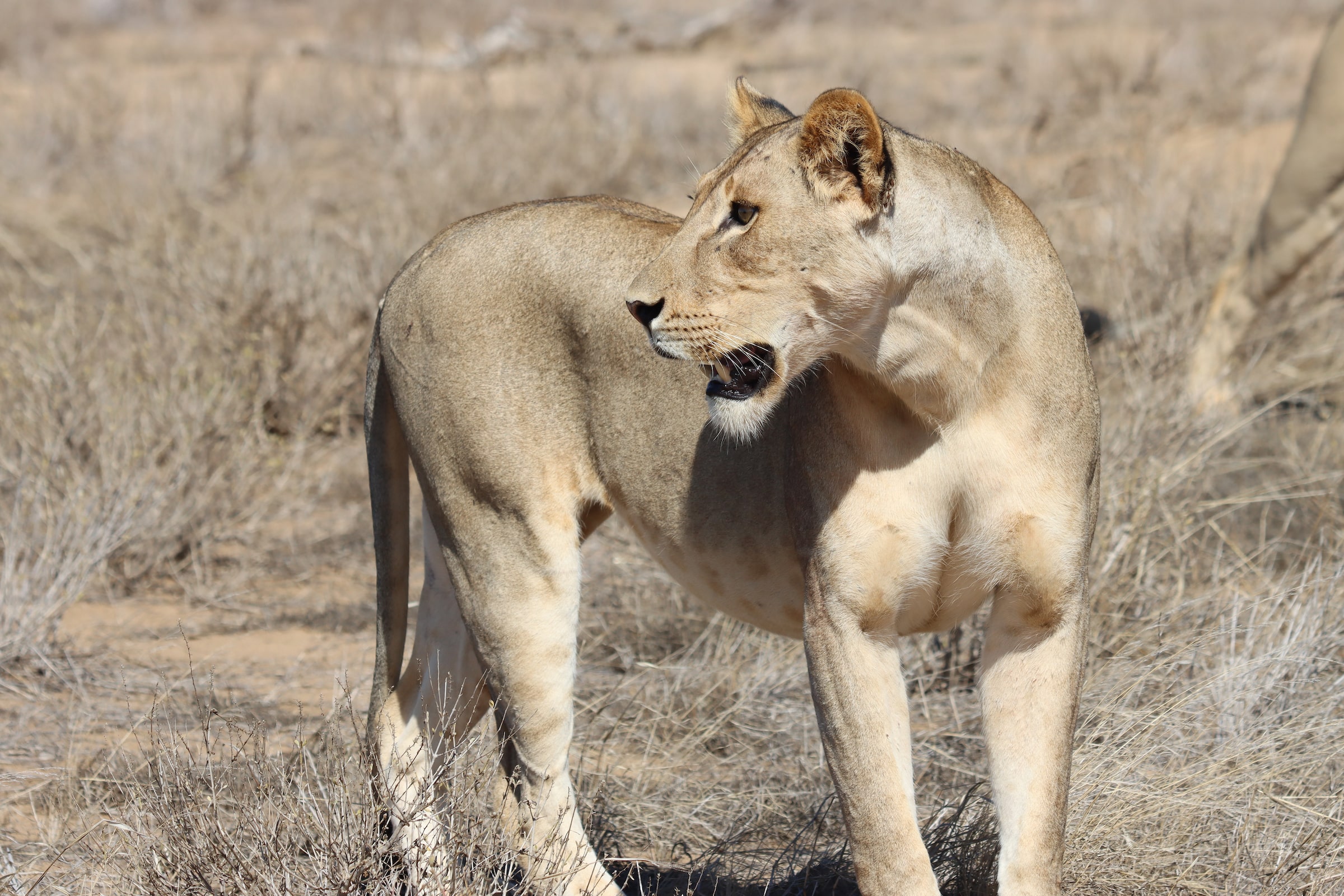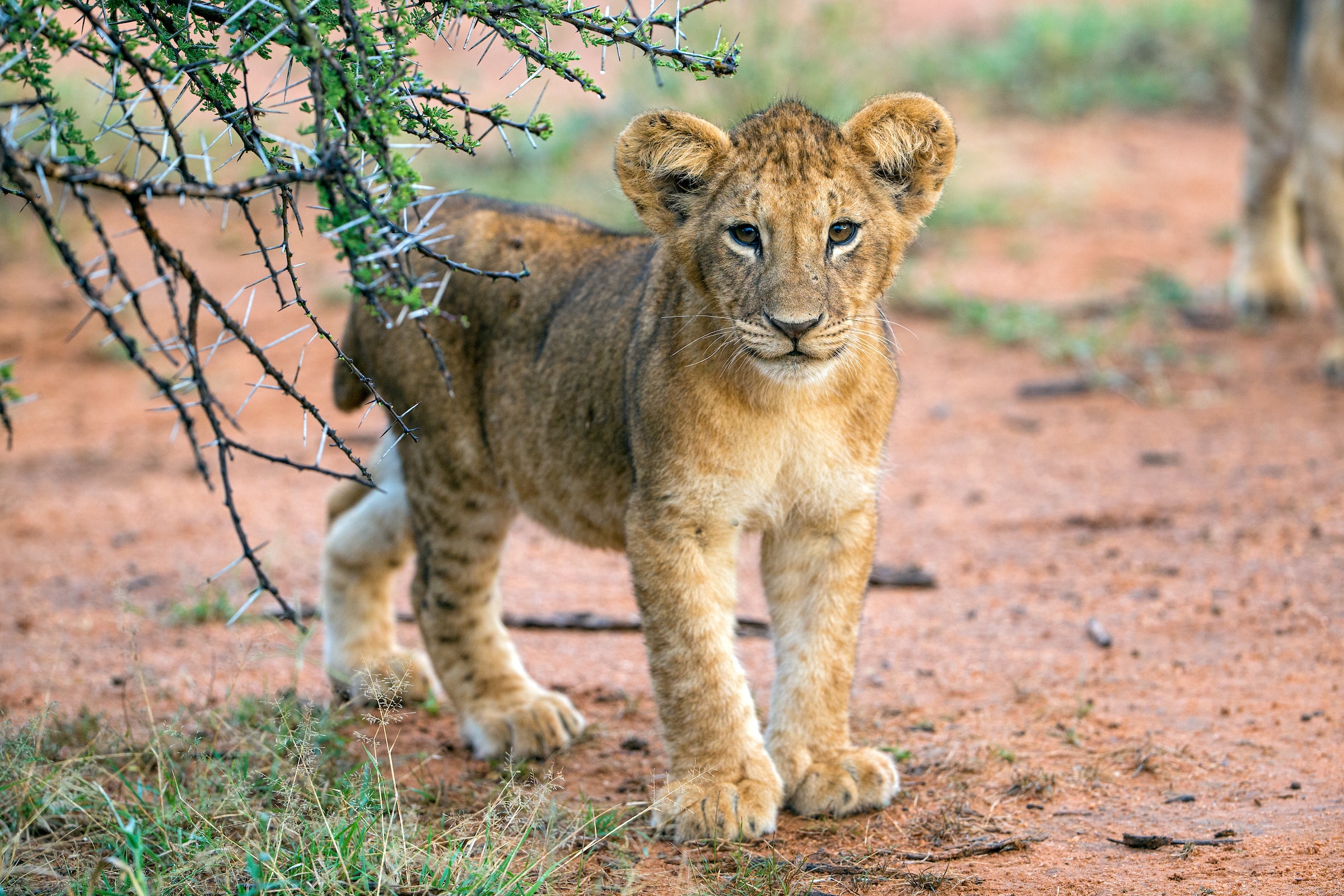When we picture a lion, we imagine a yellowish or golden tone to their fur. Lions tend to be shades of yellow, brown, and orange-brown. This is the case for both female and male lions.

Many factors can play into what determines a lion’s coloring, such as the regional environment that a lion lives in. It is crucial that a lion’s fur is similar to its environment in order to be a successful predator. Lions like to stalk their prey; without blending into their background, they will be noticed during their hunt, lessening their chances of a successful kill. The weather also plays a role in a lion’s fur. Lions that live in hotter places will tend to have lighter coats, while lions living in cooler regions will have darker coats.

However, lion’s fur will undergo changes depending on their age. For instance, cubs have a mottled coat and spots. The spots help to camouflage the cubs from predators. As the cub grows out of adolescence, these spots fade away and the adult lion bears a more consistent coloring.

Besides the coloring of the fur on a lion’s body, male lions also have varying colors amongst their iconic manes. As lions grow and age, their manes will get darker. A dark mane is also indicative of good health and high testosterone levels. These lions with darker manes are usually the best candidates for mating, and as such, usually rule their respective prides. However, mane color can also be determined by climate—lions living in chronically hotter environments tend to have lighter manes, while those living in colder climates will develop darker and thicker manes.
A lion’s coloring is not just indicative of its genetic background, but also its direct surroundings.

